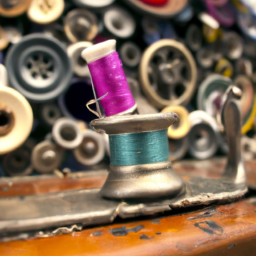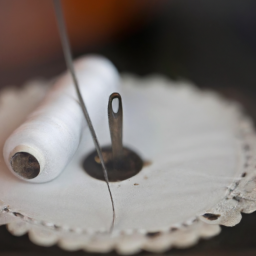
History of a Sewing Machine

Sewing machines have revolutionized the way we create garments, providing a means to create beautifully stitched
fabric products more efficiently and effectively. The history of the sewing machine is a fascinating journey that
showcases the ingenuity and innovation of individuals throughout different periods.
Early Beginnings

The first prototype of a sewing machine was created by Thomas Saint in England in 1790. Although Saint’s machine
was not commercially successful, it laid the foundation for future inventors. It wasn’t until the early 19th century
that significant progress in sewing machine development occurred.
The Impact of Elias Howe and Isaac Singer

In 1846, Elias Howe patented the first practical sewing machine, which incorporated a lockstitch mechanism. However,
it was Isaac Singer who popularized the sewing machine in the mid-19th century with several important improvements.
Singer’s machine was more user-friendly, featuring a foot pedal instead of a hand crank and a tension dial to regulate
thread tension.
Industrialization and Mass Production

With the onset of the Industrial Revolution, sewing machines became essential tools in the textile industry.
Manufacturers like Singer, Brother, and Pfaff played a significant role in the industrialization and mass production
of garments. These companies continued to refine and enhance the sewing machine’s performance and features, making
it indispensable in clothing manufacturing.
Modern Innovations

In recent decades, sewing machines have seen tremendous technological advancements. Computerized sewing machines have
become increasingly popular, offering a plethora of features such as programmable stitch patterns and automatic
needle threading. These machines have made sewing more accessible to hobbyists and professionals alike, allowing them
to create intricate designs with ease.
Sewing Machines Today
Nowadays, sewing machines come in various sizes and models to cater to different needs. From basic mechanical
machines to high-end computerized ones, individuals can choose based on their proficiency and required features.
Sewing machines are no longer limited to just garment production; they are also used for embroidery, quilting, and
other creative textile projects.
Conclusion
The sewing machine has come a long way since its humble beginnings. From its invention in the late 18th century to
the digital age we live in today, sewing machines have revolutionized the world of textiles. The continuous
innovations and improvements in sewing technology have made sewing more accessible, faster, and more enjoyable than
ever before. Whether you are a professional seamstress or a DIY enthusiast, the sewing machine remains an essential
tool in unleashing your creativity.




